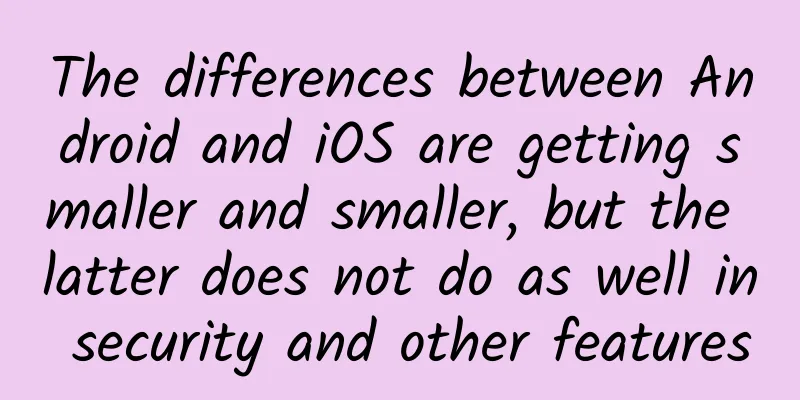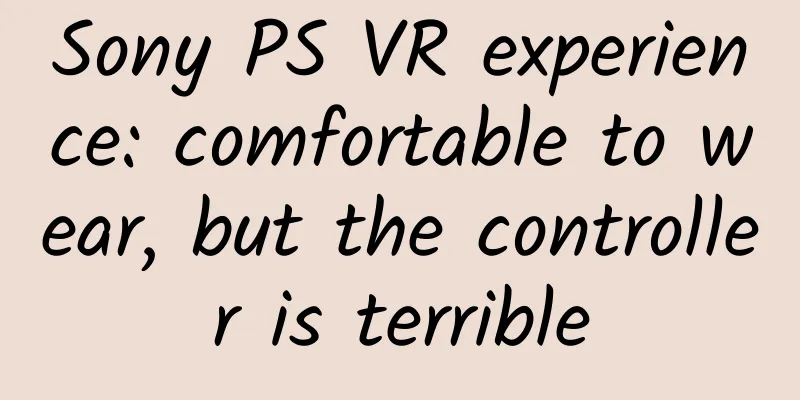The TV industry is bombarded with concepts: Which 3D, 4K, and curved screen will be left behind?

|
On the eve of the "football war", many color TV companies are once again on edge, and this time the weapons they use are basically 4K and smart. Since 2008, smart TVs have started to take off and gradually become the mainstream of the industry, and intelligence has almost become a standard feature. What makes companies regretful is that when the speed of developing new color TVs is IT-based, even faster than that of mobile phone manufacturers, the speed at which consumers replace color TVs is far slower than the speed of replacing mobile phones. Obviously, changing a mobile phone every six months or a year is not a big deal, but changing a TV every year is definitely a big deal, even though that TV may only cost three or four thousand yuan, less than the price of a high-end smartphone. Therefore, it is not surprising that many concepts have emerged in the past six or seven years due to industry promotion rather than demand. For example, in the 2010 World Cup, the trend was "watching the World Cup on 3D TV", but this year it has become "watching the World Cup on 4K TV". In the bombardment of rounds of conceptual technologies, the market can be said to have "seen a thousand sails", some of which continued to be popular, while others eventually could not avoid the fate of "none of them" and eventually became living room decorations. 3D: Although it has sales, it is mostly for display This round of 3D craze started in 2010. As usual, it was kicked off by the CES exhibition in the United States. At that time, "Avatar" was popular all over the world, and 3D moved from big screens to living rooms. Before the May Day holiday that year, color TV brands such as Samsung, LG, T CL, Konka, Hisense, and Skyworth rushed to launch 3D TVs. The price of a 55-inch foreign brand 3D TV reached 20,000 to 30,000 yuan. 3D was once the focus of the industry, and companies once called for 3D to become a "standard feature." However, at the end of 2013, few organizations have summarized 3D as a category. "Who still cares about 3D?" Nandu reporters visited the stores and found that no matter what brand, the slogans in the TV exhibition area focused on 4K and intelligence, and almost no main products or slogans mentioned 3D. A shopping guide at the store told Nandu reporters that there are very few TVs that specifically focus on 3D functions. 3D is basically a subsidiary function of smart TVs. "Generally speaking, as long as there is a 3D function, it is a smart TV, but not all smart TVs have 3D functions." He introduced that some models of a certain brand's newly launched smart TV do not have 3D functions. "This trend is definitely becoming more and more obvious. Adding 3D functions increases costs and prices, but consumers' attention to it has decreased. It is better not to have this useless thing." The shopping guide said that there were not many 3D movies available, and most of them were old movies. Consumers would rather go to the cinema to experience 3D. Consumer Ms. Ge told the Southern Metropolis Daily that she bought a TV for her parents last year. Worried that her parents would not be able to operate a smart TV, she bought a foreign brand non-smart 3D TV. As a result, she experienced the 3D function twice. Once when she installed it right after buying it, and once when she "showed off" to her parents. After that, she never touched the 3D glasses again. This function was basically just a decoration. ● Pre-gambling prediction: In April 2010, market research organization DisplaySearch estimated that global shipments of 3D TVs would reach 2.5 million in 2010 and would exceed 27 million in 2013. The market also had more optimistic expectations that year. For the Chinese market, CMM predicted in early 2013 that 3D TV sales would reach 27.16 million in 2013. ●Reality: G FK recently released monitoring data showing that in 2013, the sales share of color TVs with 3D technology alone in the Chinese market was only 2.1%, while smart TVs with 3D functions accounted for as much as 64%. Li Yaqin, research director of Qunzhi Consulting, said that the sales share of 3D had previously reached 40%, but has been declining in the past two years, at around 30%. In 2013, 3D sales were 17 million units, and this year's sales are estimated to be around 13.5 million units. ●Conclusion: Although 3D TV was once very popular and quickly gained sales volume, its sales volume fell short of expectations last year. In addition, this function is not well accepted in the living room and has become a dispensable technology, basically a decoration. 4K/UHD: Popularity is high but uneven In 2012, 4K TVs began to appear on large-screen TVs, and the following year 2013 was called the first year of 4K. Different companies used different banners, such as 4K, UHD, and ultra-high definition. Its screen resolution is 3840×2160, which is four times the screen resolution of full HD TV (1920×1080) and eight times the screen resolution of HD TV (1280×720). The development of 4K has also had some twists and turns, and there has even been a dispute over whether 4K is real or fake. As the e-commerce festival "618" is approaching, the TV exhibition area of the store visited by Nandu reporters also put up the slogan of "Sword of 618". Among them, 4K or ultra-high definition is one of the promotional focuses. The popularity of 4K is actually the result of the cooperation between manufacturers and stores. In the store, the basic idea of the display is to compare 4K and non-4K, coupled with the shopping guide's eloquence, buying 4K is the trend, otherwise it will be "OU T". According to the shopping guide of a domestic brand, out of ten sets of goods, about three or four are 4K, and half of the display area is 4K TV. The price has dropped a lot compared to before. The price of a 55-inch domestic brand is about 5,000 to 6,000 yuan, while foreign brands are more expensive, with different models around 10,000 to 20,000. The product manager of a foreign brand told Nandu reporters that 4K TV improves the picture quality, and they must be put together to see the difference. "If you put one alone, the publicity effect will not be good." Although the popularity is high, the prices of 4K TVs on the market vary, ranging from more than 30,000 to 20,000 yuan. Some companies also revealed that the RGBW technology 4K screens used by some color TV companies have greatly reduced costs, but also reduced image resolution, and do not meet the true meaning of 4K panels. RGBW technology is led by LG, and its panel company LG D provides screens for many domestic color TV companies. LG D provided technical answers, saying that its 4K panels meet 4K standards. The conclusion drawn by the Nandu reporter after consulting with shopping guides and analysts is that 4K alone is not enough. To achieve the desired effect, 4K requires the cooperation of multiple technologies such as refresh rate and color gamut display. Cheap 4K mainly targets the low-end market, which will sacrifice other configuration parameters, so although it has 4K, the effect will be discounted. In short, whether the price is high or low is not determined by 4K alone. In addition, just like the experience of high-definition TVs back then, there is not much 4K content at present, and manufacturers will have some technologies similar to the signal "2K to 4K" to improve this problem. ● Pre-gambling prediction: About a year ago, China Market Research predicted that the sales volume of 4K TVs would account for 2.33% of the color TV market share in 2013, with a sales volume of about 1 million units; 3 million units in 2014; and about 6.5 million units in 2015. At that time, the average selling price of 4K TVs was about 27,000 yuan, while the average price of ordinary TVs was about 4,000 yuan. ●Reality: According to data released by Aowei Consulting, the sales volume of ultra-high-definition TVs in 2013 was close to 1 million. The data from Qunzhi Consulting is about 1.2 million. So far, it is basically in line with expectations. And the forecast data is constantly being raised. For example, Zhongyikang raised its sales forecast for this year to 6 million at the beginning of the year. Li Yaqin said that 4K technology is mature, panel resources are abundant, and the speed of introduction by whole machine manufacturers is fast, so the development of 4K is in line with expectations. ●Conclusion: 4K and ultra-high definition are fashionable. There is insufficient 4K content at present, but the content may be abundant in a few years. The investment in potential should not be considered a waste. OLED: A highbrow, unpopular choice The pace of OLED industrialization in China began last year. LG and Samsung took the lead in releasing 55-inch OLED TVs, which were the first large-screen OLED TVs to be mass-produced. Since CES 2014, manufacturers' attitudes toward OLED have begun to diverge. At that time, Sony , Panasonic , Sharp and other companies focused on 4K, but LG and Samsung used OLED as an important display technology. However, by the middle of this year, the OLED industry has further diverged, Samsung has temporarily suspended OLED, and only LG is still struggling in the OLED market. A domestic brand shopping guide at Gome said that there are customers who inquire about OLED TVs, but the number is small. They can maintain sales, but the volume is still not increasing. In fact, OLED is not the focus of their promotion. In his opinion, OLED cannot guarantee the display level of 4K. The advantage of OLED is that the color display is better. At present, the yield rate of OLED is still not high. For products of the same size and specification, the price ratio of OLED and LCD is still about 10 times. Nandu reporters did not see any customers who were interested in buying OLED in the several stores they visited. ● Prediction before the bet: When the two Korean giants released their new products in September last year, market research organization GFK predicted that one-quarter of consumers are willing to pay extra for picture quality. Before 2015, O LE D will maintain a growth rate of 300%, and thereafter will continue to grow at around 100-200%. By 2018, O LED TVs will still maintain a growth rate of around 50%. ●Reality: OLED TVs were only put on sale around October last year, so the base number was low in the early stage, and the growth rate is difficult to reflect the actual situation. According to Qunzhi Consulting data, OLED sales last year were less than 10,000 units. At the beginning of this year, it predicted that OLED could sell 40,000 units, but due to poor market acceptance, it lowered its expected sales in May to 30,000 units. ●Conclusion: O LED is not the only one that can be bent. The current price is definitely "noble". Which one should I choose in the future? Let's see which one drops in price faster, O LED or LCD TV. Curved surface: less heat Curved screens and OLED were closely related in the beginning. OLED is bendable, so when OLED TVs were first launched, they focused on the advantages of curved screens. However, Sony, Changhong and other companies launched bendable LCD TVs last year. LCD TVs can also be curved, and although some manufacturers did not bet on OLED, they still have a strong interest in curved screens, so curved screens have gradually become an independent concept. Currently, first-tier panel manufacturers are capable of launching curved modules or supplying bendable semi-finished products (O pen Cell). Nandu reporters saw in the store that there are curved TV brands including Sony, Samsung, LG, Hisense and Changhong, among which LG's category is O LE D, and the sizes are concentrated in 55 inches and above, mainly in the high-end market. In the store, Nandu reporters saw that the curved surface is not yet a hot spot for overall publicity. A consumer told Nandu reporters that this technology feels quite novel, "My husband is a photographer, he said that the curved surface is good, but I am used to the flat surface." Another consumer told reporters that he did not know much about this technology, and felt that the public's understanding of the curved surface was relatively low, and he had never seen any publicity. Another consumer directly asked back: "Why do you want a curved surface? There is room for a flat surface at home." Li Yaqin said that the maturity of curved technology is still not high, and the technology evolution in the first half of the year was not as expected. Some products still need to solve the problems of light leakage on both sides, low brightness, curvature, etc. In terms of price differences, according to the May Day monitoring, except for LG, the price multiples are between 1.2-2, and the average is 1.5 times. ● Prediction before the bet: The Consumer Electronics Product Research Office of the China Electronic Commerce Association predicted in September last year that by the end of 2014, curved TVs will account for 15% of the sales of products with a size of 55 inches or above in the Chinese color TV market, becoming the core high-end product of mainstream color TV brands. At the beginning of this year, Qunzhi Consulting predicted that the sales of curved TVs this year would be around 350,000 units. ●Reality: Qunzhi Consulting has lowered its forecast, estimating that this year will be the year of cultivating the curved TV market. In 2014, the scale of curved TVs in the Chinese market was only 260,000 units (including OLED), with a penetration rate of only 0.5%. ●Conclusion: Consumers have a poor understanding of curved surfaces, and for manufacturers, curved surfaces are more like a test of the waters. Let consumers vote honestly with their feet. [Shopping] OLED At Gome, a shopping guide said that the O LED concept is not as popular as 3D, so not many people will pay special attention to this concept, but O LED technology is indeed a technological leap in the TV industry, and its high price and popularity in China still need time to adjust. Surface Shopping guides from different brands also gave different information. A shopping guide told Nandu reporters that curved TVs are only suitable for one person to watch, and because the transistors are curved, the life of the TV will be greatly reduced, only 1/3 of that of ordinary flat-screen TVs; while LG brand salesmen insisted that this was fabricated by other brands for competition, or a misunderstanding of curved TVs. LG brand shopping guides said that curved TVs are a trend in the current development of TVs. Now the screens of iMax theaters are all curved, and it is more in line with the structure of the human eyeball. It can be expected that the curve is the trend. It is denied that the curve sacrifices the life of the TV, and there is no problem of poor viewing from the side. In addition, it was revealed that the monthly target sales of LG's high-end curved O LED TVs in a Gome standard store were only 3 units. As a winner of Toutiao's Qingyun Plan and Baijiahao's Bai+ Plan, the 2019 Baidu Digital Author of the Year, the Baijiahao's Most Popular Author in the Technology Field, the 2019 Sogou Technology and Culture Author, and the 2021 Baijiahao Quarterly Influential Creator, he has won many awards, including the 2013 Sohu Best Industry Media Person, the 2015 China New Media Entrepreneurship Competition Beijing Third Place, the 2015 Guangmang Experience Award, the 2015 China New Media Entrepreneurship Competition Finals Third Place, and the 2018 Baidu Dynamic Annual Powerful Celebrity. |
<<: Why has WeChat group become a sensitive area for fund managers?
>>: Mobile is the main battlefield, what opportunities are there for online video?
Recommend
12 must-have formulas for planners in 2020
Introduction丨Writing a proposal can be fun in thi...
Why do you get burned all over when you play in the water? Keep these chemicals away from your home!
Expert of this article: Chu Yuhao, PhD of Beijing...
DedeCMS template common tags
I have been searching for the commonly used tags ...
Nanping SEO training: The website articles have been updated but not received
If the content of the article is in this situatio...
How do fish avoid danger? What are some ways to defend against enemies?
Produced by: Science Popularization China Author:...
Detailed explanation of more than 40 new features introduced in iOS 12.2
[[260446]] After the spring keynote speech held a...
A case study on efficient advertising and customer acquisition optimization in the beauty industry!
With the development of society, the growth momen...
Chun Ge, the painter, introduces the human body painting in 2021 [good quality and material]
Chun Ge, the painter, introduces the basic practi...
What is the result of the Russian "troll army" spending $100,000 on Facebook advertising?
On September 20, local time, Facebook Chief Secur...
Is fake tofu also a treasure? It would be a shame not to eat these 5 kinds of fake tofu!
When you search for tofu, you'll often find &...
[Case] 18 methods of social marketing of Durex!
How to judge whether something is really popular?...
This small hole on the ear is not a symbol of "wealth"! It may be a dangerous hole...
This article was reviewed by: Xiaobo Zhou, Doctor...
The copy targeting is the same, why is the CTR still lower than others?
The copywriting is obviously very well written, s...
Facebook Vice President: Doing this will lead to 66666666
Editor's note: Caryn Marooney is Facebook'...
Does using BT to download damage your SSD?
Q: Will BT and other P2P download methods reduce t...









